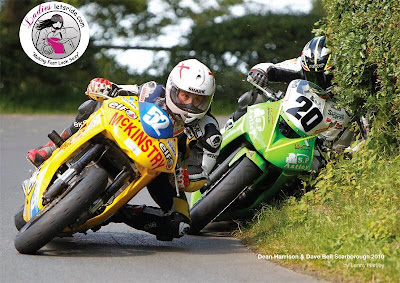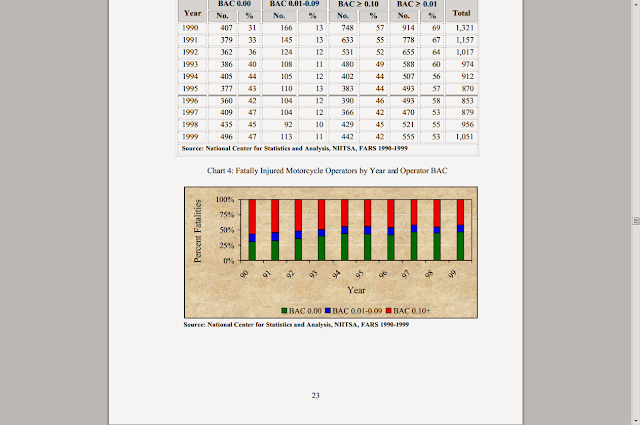Motorcycle safety is the same in California as it is in Ohio and elsewhere.While California is the number 1 mecca for motorcycle riders you might be surprised to learn that Ohio is number 3 on the list for registered motorcycles. My friend Steve Sweat is a motorcycle accident lawyer with a lot of experience regarding motorcycle accidents safety, prevention and helping injury victims with motorcycle accidents in California.So I asked by friend if he wouldn't mind covering what he thought were some crtitical aspects of motorcycle safety. Here's what he wrote. please read . It could save your life
Whether you’re a motorcycle rider in Ohio or California or
any other state in the Union, there is one thing that is as deadly as anything
on our nation’s highways for bikers and that is, another vehicle making an
unsafe lane change and clipping the motorcycle rider. Because of the speeds at which most all
vehicles including bikes are traveling, there are rare occasions where the bike
rider is able to regain control but, the majority of the time, this collision
results in a lay down and ejectment onto a busy highway. If the initial impact does not cause extreme
bodily harm such as fractures, lacerations, abrasions (road rash), internal
bleeding or any number of other serious medical conditions, the fact that the
rider is now in the roadway and facing oncoming traffic is cause for further
injury or death.
Why is the unsafe lane change so frequent a cause for traffic collisions
between cars and bikes?
Lane change accidents always come down to one thing: Failure
to properly notice or assess the presence of another vehicle in a juxtaposed
lane prior to making a turning movement into that lane of travel. With regard to auto vs. motorcycle
collisions, this is amplified due to the disparity in size between cars, trucks
and SUVs, on the one hand, and motorcycles, on the other. Oftentimes, the biker is not even seen at all
prior to the lane change. Moreover, a
misjudged collision is also all too common.
In a recent study conducted by psychologists at Texas Tech University,
it was shown that the human brain actually correlates size with distance and
frequently miscalculates a smaller object as being farther away than it really
is. It is for this reason that most all side
view mirrors on vehicles have the phrase “objects in mirror may be closer than
they appear” printed on the glass.
The lane change smash-up takes many forms, including the
following scenarios:
1.
Direct
Side Impact: This occurs when the car enters the lane where the biker is
riding while the motorcycle is wholly or partially on the side of the vehicle
changing lanes. Most often this results
in the biker being pushed and knocked down unless they can avoid impact by
escaping to their right or left.
2.
Getting
Clipped: This occurs either when the biker is at the rear of the adjacent
car or truck and the vehicle hits the bike and then swerves back to try to
correct or when a motor vehicle passes a motorcyclist and then misjudges how
far they have gone and attempts to get back in front of the bike and catches
the front tires or spokes with the rear bumper corner.
What are some of the ways a biker can avoid a side-swipe crash on a
highway?
If the main cause of side-impact collisions between cars and
bikes is a lack of being noticed then, the main rule of thumb is to make
yourself more conspicuous and give yourself an “out” when you are riding a
motorcycle on a multi-lane highway or freeway.
Good tips for avoiding the accident or minimizing injury include the
following:
·
Wear brightly colored clothing or buy a bike
that is a bright color.
·
Get louder pipes and give it rev, when necessary
to let the driver know of your presence.
·
Avoid riding for any length of time in a
potential blind spot (e.g. at the right or left rear quarter panel of the
vehicle next to you).
·
If possible, ride in the far right or far left
lane with an emergency lane adjacent to you to give yourself an “out” in the
event a car does come over on you.
·
Wear protective gear like helmets, skid guards,
gloves, and boots. This will mitigate
bodily harm in the event of an ejectment or lay down.
What do most state laws say about the legal liability of motorists who
cross lanes of travel without looking or noticing a motorcycle?
Every state has a same or similar rule regarding the legal
liability or fault associated with changing lanes and causing an accident. For example, under California Vehicle Code 21658(a)
a driver is mandated to travel “as nearly as practical entirely within one
lane” on multi-lane highways and is prohibited from moving from one lane to
another unless and until “such movement can be made with reasonable
safety.” Likewise, Ohio Code 4511.33 has
almost identical language requiring motor vehicle operators to remain within one
lane of travel until an entry into an adjacent lane can be made “with safety.”
Why is it best to consult with an experienced motorcycle injury lawyer as
soon as possible following a lane change collision?
Oftentimes, the biker who is the victim of a driver coming
over on them on the freeway goes down and suffers serious injuries including
head trauma that can affect their ability to recall all the events leading up
to and just prior to impact. Drivers
will most often stop but, sometimes not until they are informed by other motor
vehicle operators or law enforcement that they have caused a traffic
incident.
It is human nature to try to point the finger at other
people when an accident like this happens and it is “second nature” for
insurance adjusters to try to find legal blame against the motorcycle
rider. This makes it crucial to consult
with a personal injury attorney who represents motorcyclists on a regular basis
and is all too familiar with the lane change scenario and how to best advocate
for the legal interest of the biker. An
experienced biker’s lawyer can obtain recorded statements or depositions of
third party witnesses, employ accident reconstruction experts, review police
incident reports and take the deposition of the driver in question and conduct
many other steps that will ensure that the legal fault will lie with the driver
who clipped the biker and that their insurance carrier will pay all costs of
present and future medical expenses and pain and suffering damages to the
biker.
Sources:

























